If you own one of the Breville Barista coffee machines and have been struggling with sour or bitter espresso, don’t worry – you’re not alone. These problems are common, but most of the time, they’re easy to fix. In this blog post, we will look at different reasons why your espresso might be sour or bitter and how you can fix it. We’ll cover everything from general tips to more specific ones for Breville Barista owners. By the end of this post, you should be able to make great espresso just the way you like it. So read on and start brewing delicious espressos today!
Important Preconditions
Before we dive into tips for fixing sour or bitter espresso, it is important to stress that in order to troubleshoot your espresso, you need to be consistent during the brewing process. This means using the same beans, grind size, dose, tamp pressure, and extraction time every time you make espresso. As in the culinary craft, where following a recipe and precise measurements is key to the perfect outcome, so it is in espresso making. The recipe, in the case of espresso, is not only the coffee beans you use but also the grind size, dose, water temperature, etc. All of these factors must be precisely controlled to get repeatable results. For example, if you keep everything the same but increase the yield (the amount of water in the cup), you will end up with a wildly different tasting espresso.
So, if you’re troubleshooting your espresso, changing only one variable at a time is critical. This way, you can be sure that the change you’re making is actually causing the difference in taste.
If you want to learn more about dialing in espresso with your Breville Barista machine, we highly suggest checking out our blog post on the topic. For now, let’s get into some tips for fixing sour or bitter espresso!
Most Common Causes of Sour Espresso
There are many potential causes of why your espresso tastes sour. We’ve tried to sort them from the most to the least common in the following list. If you want to learn more about each of these potential causes and how to fix them, simply click on the related link to jump to the relevant section.
Here are the top causes of sour espresso:
– wrong choice of beans (light roast, sour flavor profile)
– the espresso is under-extracted (grounds are too coarse, grind finer)
– the water temperature is too low (increase water temperature, preheat portafilter and group head)
– incorrect brew ratio (pull longer shots)
– the coffee beans are too fresh (allow beans to degas appropriately)
– channeling (improve puck prep, distribution, and tamping)
TIP: If you find your espresso sour but don’t want to waste it, try adding a tiny pinch of baking soda (sodium bicarbonate) and see the sourness fade.
Most Common Causes of Bitter Espresso
In the list below, you can find different causes of bitter espresso, sorted from the most to the least common. Click the relevant link to go directly to the section that discusses each of these potential causes and how to address them.
Here are the top causes of bitter espresso:
– the wrong choice of beans (dark roast, robusta variety, bitter flavor profile)
– the espresso is over-extracted (grounds are too fine, grind coarser)
– the water temperature is too high (decrease water temperature)
– incorrect brew ratio (pull shorter shots)
– dirty machine (purge the group head, clean portafilter, backflush, etc.)
– channeling (improve puck prep, distribution, and tamping)
TIP: If you find your espresso bitter but don’t want to pour it out, try adding a tiny pinch of salt and watch the bitterness magically disappear!
Causes and Solutions for Sour or Bitter Tasting Espresso
Wrong Choice of Coffee Beans
The single most important factor determining the flavor profile of your espresso is the beans you use. When choosing your next bag of beans, pay attention to the roast level, variety, and flavor profile descriptors.
Light roasts tend to be more sour, while dark roasts tend to be more bitter. With my Breville Barista Pro, I’ve found that medium roasts generally work best for espresso. These are not as difficult to dial in as light roasts and produce tasty, balanced shots with less sourness and more interesting aromatics than dark roasts.
When it comes to variety, there are two main types of coffee beans – Arabica and Robusta. Arabica beans generally have a more developed flavor, while Robusta beans tend to be more bitter thanks to higher levels of bitter compounds such as caffeine. Breville recommends using 100% Arabica beans with their machines.
As for the flavor profile, it’s best to choose beans with descriptors that match your taste preferences. If you like more acidity in your cup, look for descriptors with various fruit names, such as citrus fruits, berries, etc. On the other hand, if you prefer coffee with more bitter notes, look for descriptors such as dark chocolate, cocoa, or different kinds of nuts.
If you’d like to learn more about choosing the best beans for your Breville espresso machine, read our article on the subject.
The Espresso is Under or Over-extracted
Probably the second most important factor that determines the quality of your espresso is the extraction.
Extraction can be defined as the process of forcing hot water through coffee grounds to dissolve the coffee’s soluble compounds (oils, acids, sugars, salts, etc.) and extract its flavor.
The general rule is that espresso extraction should take around 20-30 seconds for a double shot. Keep in mind that this is simply a ballpark to aim for, but the ultimate guide is the taste.
Since salt and acid compounds are the most soluble, if the water passes through the grounds too quickly, the espresso tends to be sour and lacks body, which is an indication of under-extraction.
Conversely, if water takes too long to pass through the grounds, the espresso will have a bitter or astringent taste, indicating over-extraction.
The key factor here is the grind size. The finer the grinds, the more dense the coffee bed will be, and the slower the water will flow through it, and vice versa.
If, for example, you’ve extracted espresso in 20 seconds (or less) and it has a sour taste, decrease the grind size to achieve a finer grind and try again. Make only slight changes (e.g., 1 step change for the Barista Express or 1-2 steps on the Barista Pro due to the higher resolution of the grinder).
On the other hand, if your espresso is extracted in more than 30 seconds and tastes bitter or astringent, make the grind coarser. Again, remember to make only incremental changes until you find the sweet spot for your beans.
It is important to note that a roast degree affects how easy/difficult it is to extract the flavors and aromas from the coffee grounds. Typically darker roasts are easier to extract, while lighter roasts are more difficult. For this reason, dark roasts generally have a shorter extraction time – closer to 20 seconds, while light roasts can take up to 30 seconds (or even more in some cases).
Incorrect Brewing Temperature
Another important factor that significantly impacts the taste of your espresso is the brewing temperature.
Even though Breville’s espresso machines can preheat the water to the optimal brewing temperature in a matter of seconds, it is important to stress that all parts that come in contact with brewing water should be at the optimal temperature as well. This includes the portafilter, espresso machine’s group head, and cups.
For this purpose, you should always run a couple of blank shots with inserted portafilter (without any coffee grounds) to preheat all the necessary parts. Without this procedure, the metal parts (the group head’s shower screen and the portafilter) will significantly lower the water’s brewing temperature, and as a result, you’ll get sour espresso.
In case you’ve correctly preheated all the parts and your espresso still tastes sour, the Breville Barista line of espresso machines gives you an option to adjust the brewing temperature by ±2°C. Try increasing the temperature by 1 or 2 degrees and see if it solves the problem.
Similarly, if you are experiencing some unpleasant bitterness in your espresso, it might indicate over-extraction, and you should try reducing the brewing temperature by a few degrees.
Generally, lighter roasts are harder to extract and therefore require higher brewing temperatures, while darker roasts are easier to extract and taste best with lower brewing temperatures.
Incorrect Brew Ratio
A brew ratio is the amount of coffee grounds you use in relation to the amount of espresso in the cup.
For example, if you use 18 grams of coffee grounds and produce 36 ml of espresso, your brew ratio is 1:2, which is generally considered the standard. However, different roast levels, as well as different coffee varieties, benefit from different brew ratios. As I already alluded to in the previous point, lighter roasts are generally more difficult to extract than darker roasts. Therefore, you might want to use a normal or slightly higher brew ratio (1:2 – 1:2.5) for lighter roasts (e.g., 17g of coffee grounds to produce 34-42.5ml of espresso) and a slightly lower – ristretto style brew ratio such as 1:1.5 for darker roasts (e.g., 18g of coffee grounds to produce 27ml of espresso).
To better understand how the brew ratio affects the taste of espresso, it is important to know what happens during the espresso extraction process.
The entire process can be divided into three stages:
-
- In the first seconds of the extraction, mostly acids and salts are extracted from the coffee grounds as these compounds are the easiest to dissolve in water. This is why the espresso tends to taste sour and acidic in the beginning.
- As the extraction time increases, the espresso develops, and more of the coffee’s oils, sugars, bitter compounds (such as caffeine), and other aromatics are dissolved into the water. In this stage, your espresso should have a well-balanced taste and sweetness.
- If you continue extracting the coffee, you will reach the third stage, where more and more bitter compounds are extracted from the grounds. The espresso will become increasingly bitter and astringent.
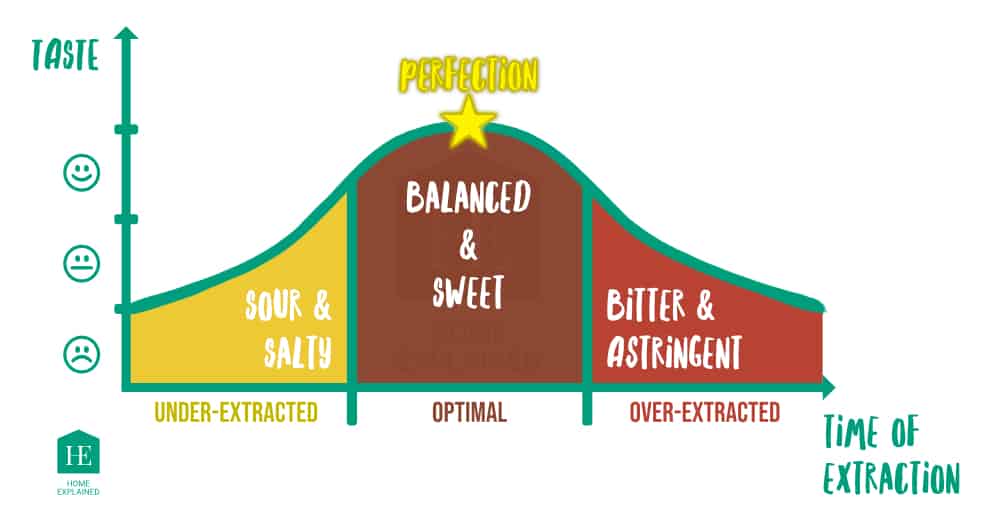
There is no set timeframe for each stage since it depends on numerous factors such as the roast level, coffee variety, growing altitude, and many others. Generally, you can expect darker roasts to reach the balanced taste closer to the 20-second mark while lighter roasts closer to the 30 seconds.
Of course, this is a somewhat simplified view of the extraction process as, in reality, all the compounds are being extracted at the same time but at different rates. However, it is helpful to know that certain tastes are more pronounced in different stages than others.
The Coffee Beans are Too Fresh
Freshly roasted coffee is one of the most important factors for making a great-tasting espresso. However, the fresher does not always mean the better.
Contrary to popular belief, coffee beans need a certain amount of time to degas – which is the process of releasing carbon dioxide produced during the roasting process.
Usually, you want to wait at least 5-10 days after roasting before brewing espresso. Dark roasted beans degas faster and therefore are ready to use sooner (closer to the five-day mark) thanks to their higher porosity resulting from the longer roasting time. On the flip side, light roasted beans degas slower and can take around 10 days or even longer before they reach their peak flavor.
If you use coffee beans that are too fresh, the carbon dioxide gas will not have had enough time to escape, and as a result, the coffee might taste sour. Furthermore, higher carbon dioxide levels in the freshly roasted beans can lead to extraction problems making it hard to dial them in and get a consistent shot.
Dirty Machine
A dirty espresso machine can ruin even the best-tasting coffee beans. Remaining coffee grounds, the buildup of coffee oils, etc., can all lead to a bitter-tasting espresso. Fortunately, the solution is really simple – just clean your machine.
A good rule of thumb is to make sure that all parts of the machine that come in contact with the brewing water and coffee grounds are clean. This includes the group head, portafilter, baskets, and the insides of the espresso machine itself.
In practice, this means you want to flush the group head before pulling a shot to remove any remaining coffee grounds and rinse and wipe down the portafilter and the filter baskets after each use.
It is also important to clean the inner workings of the machine. To do so, perform a backflush at least every couple of days. For this purpose, use the rubber disc that came with your Breville espresso machine, insert it into the empty portafilter, lock it in and run a single blank shot. This is similar to Breville’s standard flush cycle but without the cleaning tablet. Doing so will help remove coffee oils built up inside the machine and maintain general cleanliness between the more thorough flush cleaning cycles.
Finally, make sure to deep clean your machine periodically. If you’d like to learn more about how to clean your Breville espresso machine properly, we’ve prepared a separate guide for you.
Channeling
Another common issue that can cause sour or bitter espresso is channeling. To put it simply, channeling occurs when the water finds an easier path through parts of the coffee puck instead of flowing through it evenly.
As a result, some areas of the coffee bed are over-extracted while others are under-extracted leading to a sour or bitter-tasting espresso that lacks body.
Wondering how you can tell if your espresso is channeling?
For this purpose, you will need a naked, aka bottomless portafilter. If you don’t have one already, here is the one we use (Amazon link) with our Breville Barista Pro.
Once you have your naked portafilter, brew a shot of espresso as usual and pay close attention to the stream of espresso coming out of the portafilter. If you notice any jets of water spraying out of the bottom of the filter or, conversely, there are dry spots where the espresso isn’t coming out at all, then these are clear signs of channeling.
Here are some of the causes of channeling and ways to prevent it:
– the coffee grounds are too fine (grind coarser)
– clumps in coffee grounds (break up clumps with a pick or coffee stirrer – Amazon link)
– uneven distribution of coffee in the portafilter (use a coffee distributor – Amazon link)
– uneven tamping (use a palm tamper – Amazon link)
– too much or too little coffee in the portafilter (use recommended dose of coffee)
TIP: If you don’t have a coffee distributor already, we recommend getting a 2-in-one tamper and coffee distributor (Amazon link). It only costs a few bucks and will make your life much easier. To help you set up your tamper, check out our complete guide.



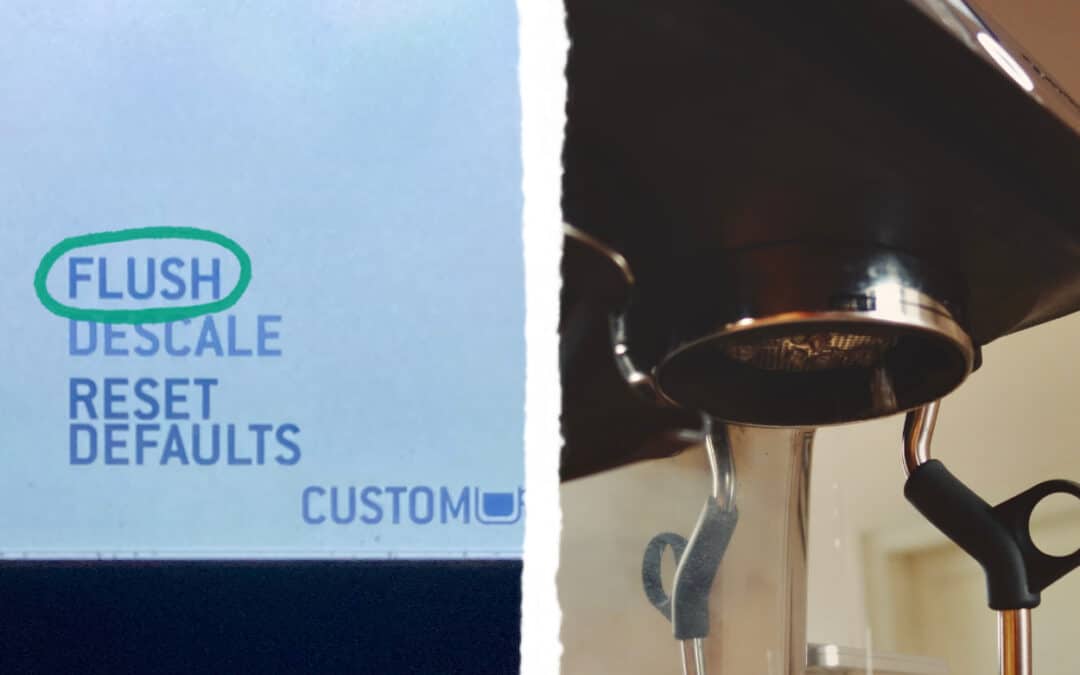
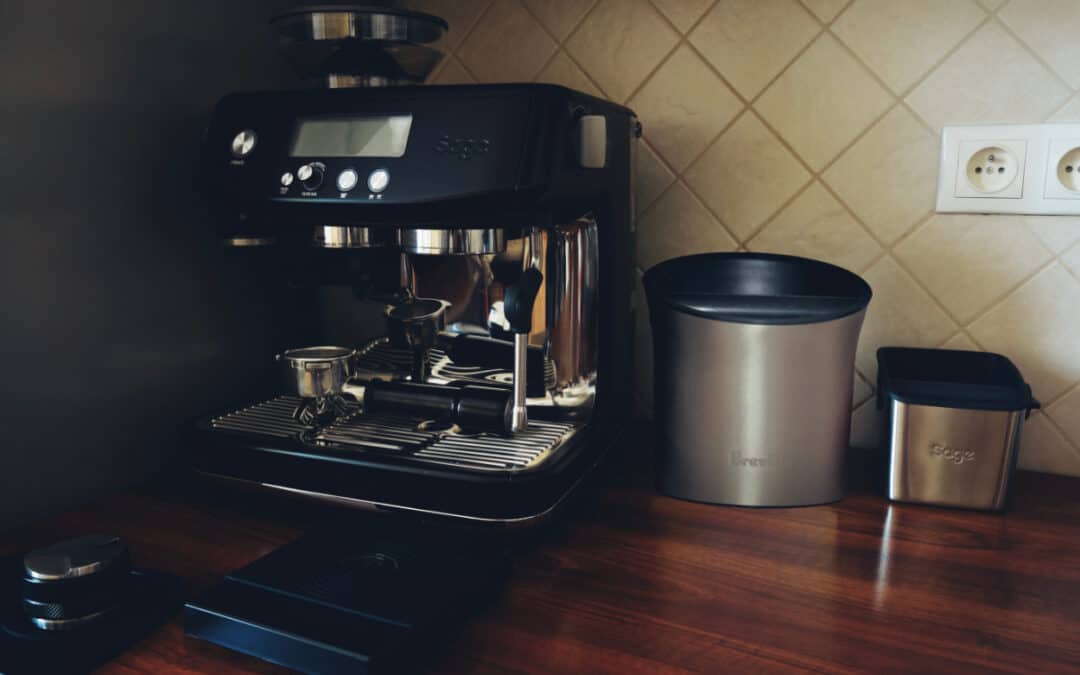
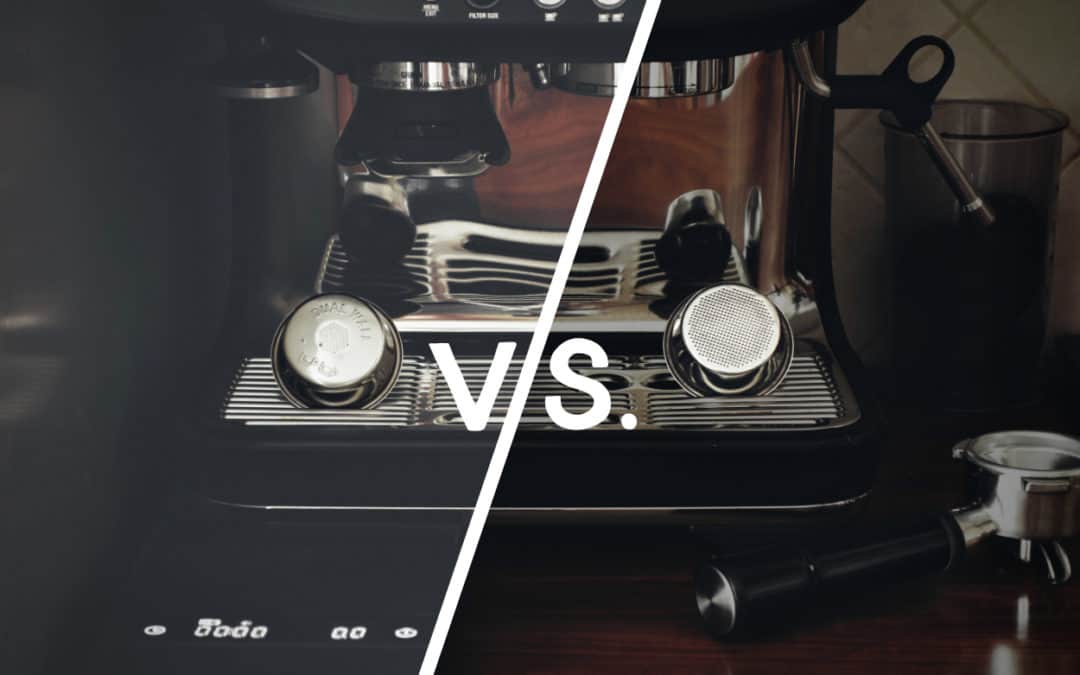

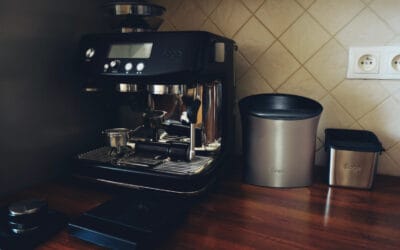
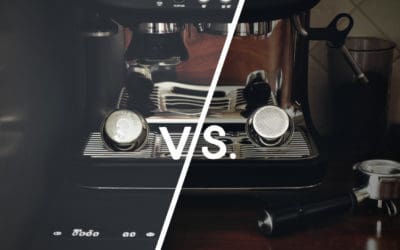
0 Comments